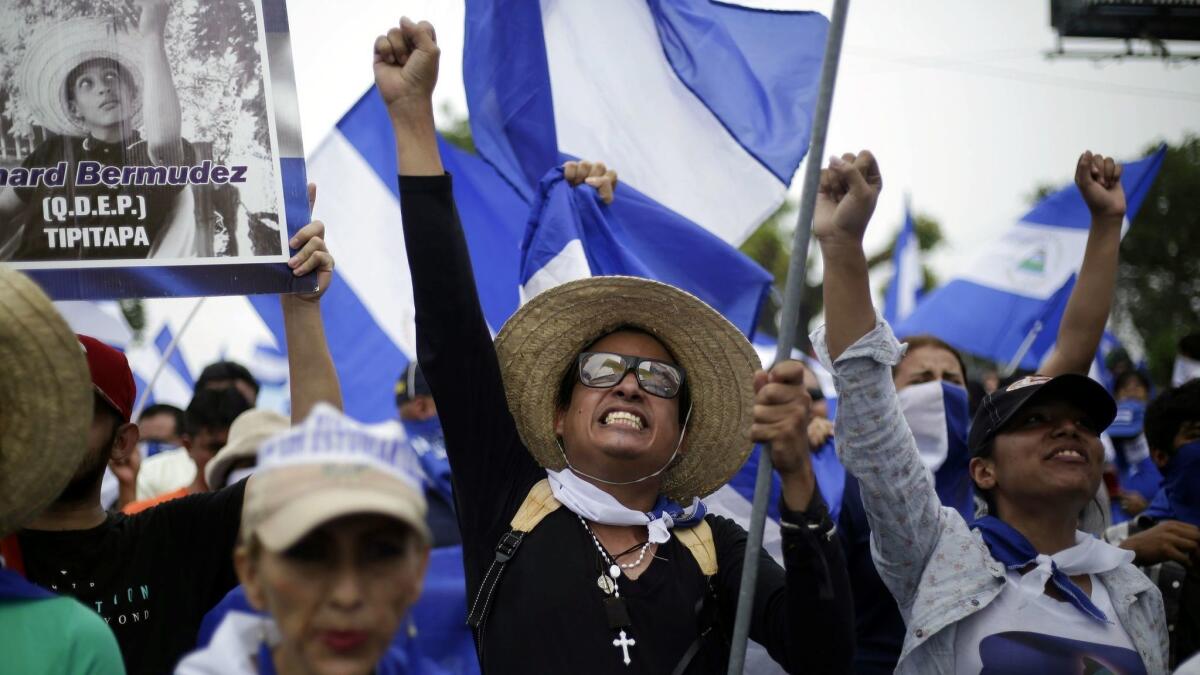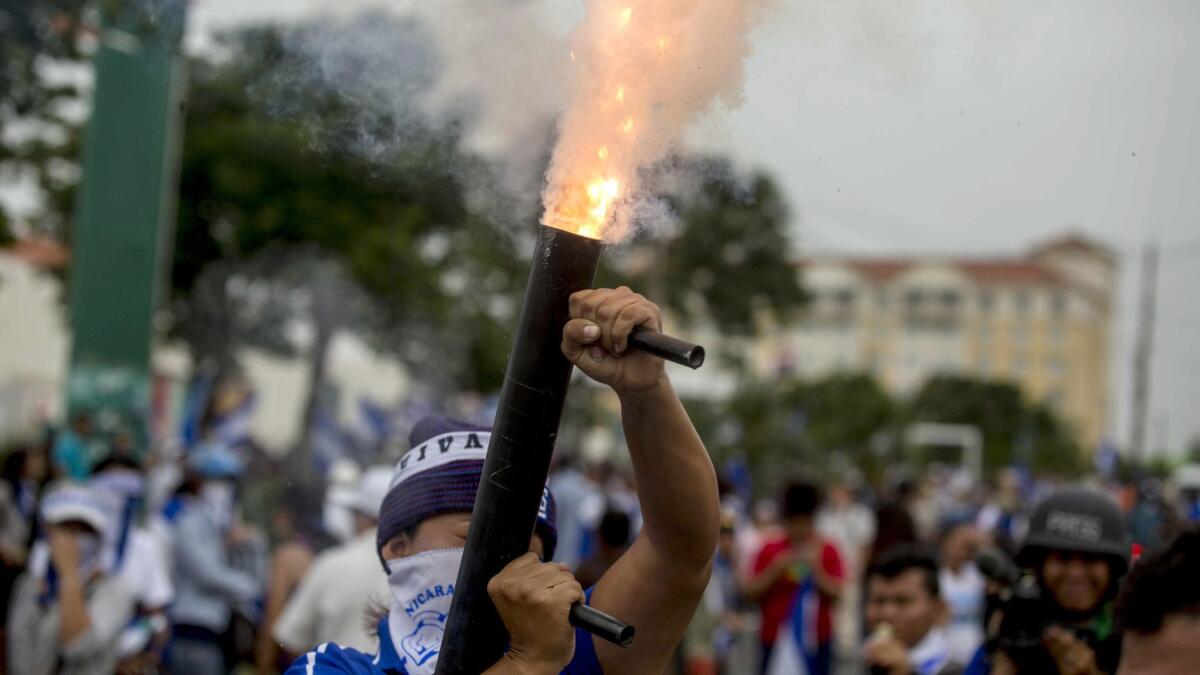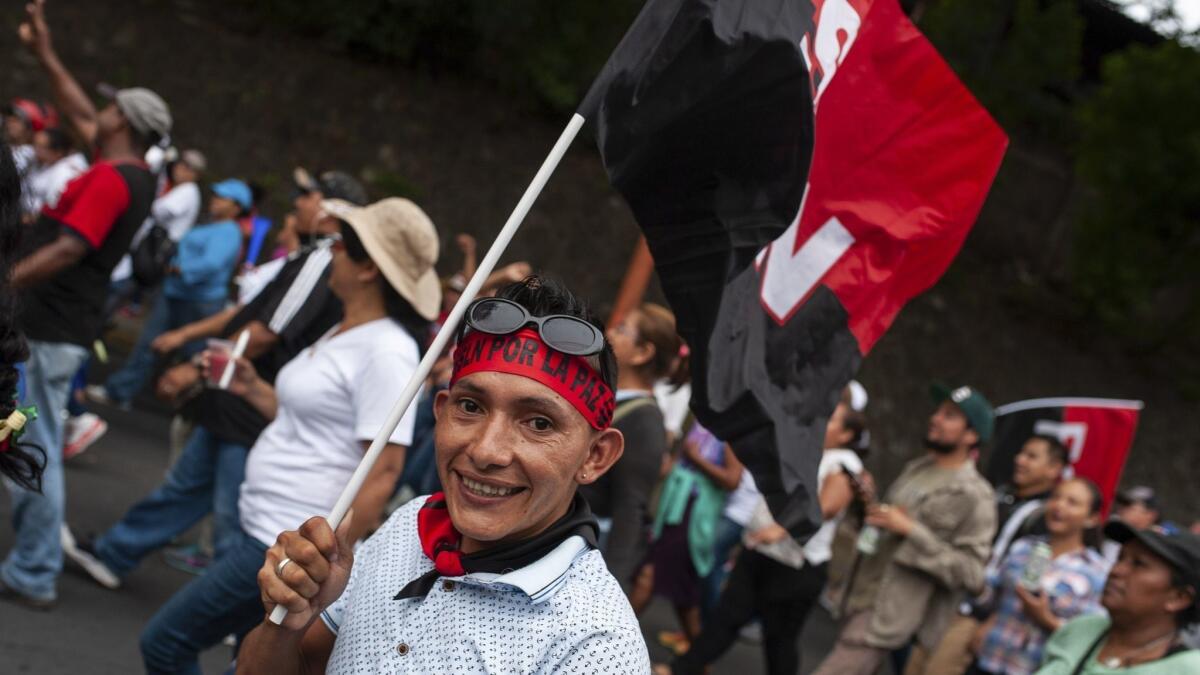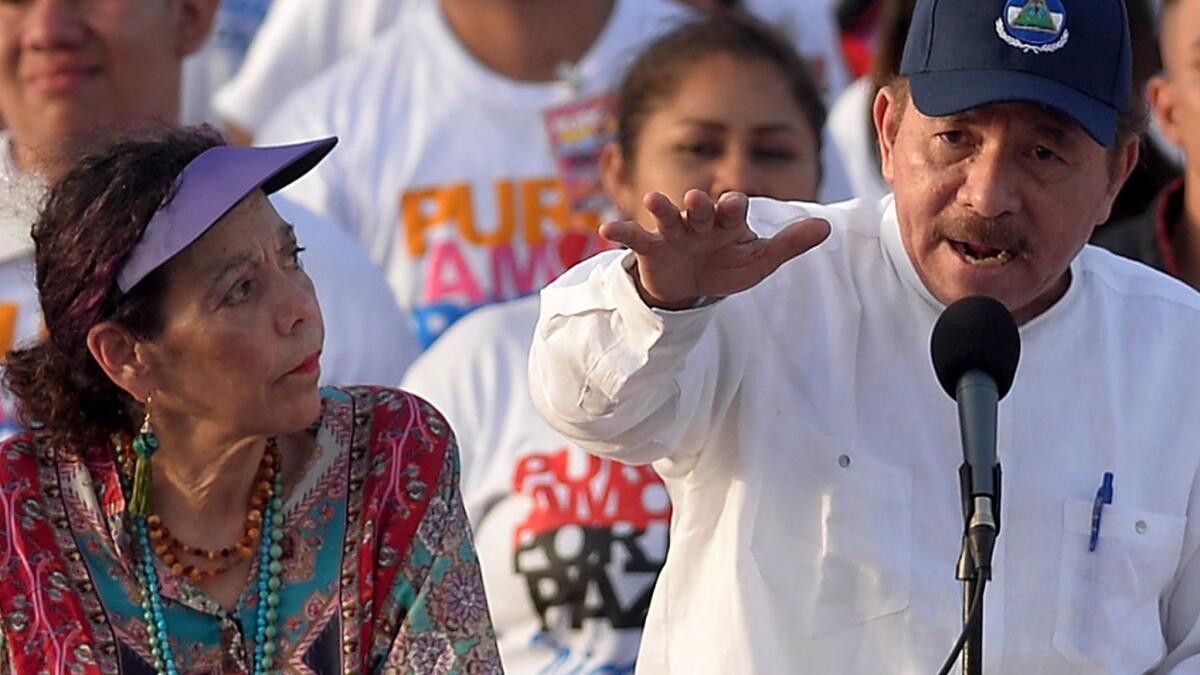Here’s what you need to know about the crisis in Nicaragua

- Share via
Reporting from Managua, Nicaragua — More than three months of political turmoil, demonstrations, looting and street battles have convulsed the Central American nation of Nicaragua.
President Daniel Ortega, the leader of the leftist Sandinista revolution who has long dominated the country’s political scene, has rejected opposition demands that he step down as leader of this country of 6 million. Here is a brief overview of the crisis, and the developments that led up to it.
What are anti-government protesters seeking?
The protests began in April against Ortega’s proposed reforms to the nation’s reeling social security system. Under pressure, Ortega withdrew his proposals for increased contributions from social security participants. But the protest movement evolved into broader demands for the resignation of Ortega and his Sandinista leadership.
What is the chief criticism of Ortega’s government?
Critics say Ortega, 72, has become an autocratic leader who has lost touch with the people and is intent on imposing a family dynasty in Nicaragua. His wife serves as vice president and other family members hold various key business and media posts. The opposition charges that Ortega has throttled dissenting voices, overseen mass repression in recent months, consolidated power in the legislative and judicial branches, and pushed for an end to presidential term limits that allowed him to run successfully for a third five-year term in 2016. Detractors say the one-time leftist icon has become a septuagenarian mirror-image of former dictator Anastasio Somoza, overthrown by Ortega and other Sandinista revolutionaries in 1979.

Who is the opposition?
The opposition says its ranks include a broad array of Nicaraguan society, including merchants, peasants, middle-class professionals and former Sandinista loyalists who have rejected Ortega. The government says it retains majority support among Nicaraguans and calls the opposition largely an upper-class movement backed by Washington.
How many people have died in the recent violence?
About 300 people have been killed, mostly by pro-government gunmen, according to human rights groups and the opposition. But the government says dozens of police and Sandinista loyalists have been killed by opposition “bands” and “terrorists.”
What is the situation now?
An uneasy calm reigns as government security forces have moved in recent weeks to evict protesters from university campuses and other sites where the opposition had become entrenched. Hundreds have been arrested and some may face terrorism charges under new laws. Street rallies for and against the government continue, and many Nicaraguans remain fearful of going out at night.
What is Ortega’s response to opposition demands?
Ortega has rejected calls that he step down or move up presidential elections next scheduled for 2021. He has accused opponents of mounting a “coup” with the support of the U.S. government and the Roman Catholic Church. He has said he is open to “dialogue,” but not with coup backers, and has denied persecuting church leaders. He says his Sandinista leadership retains popular support.

What has been the response of the Catholic Church?
The church remains a powerful institution in this overwhelmingly Roman Catholic country, and Ortega has identified himself as a Catholic. Cardinal Leopoldo Brenes, the archbishop of Managua, has denied any church backing for a coup and labeled as a “falsehood” Ortega’s charges that some churches housed armed protesters. The church says it remains ready to serve as a mediator.
How has Washington responded?
The Trump administration has put the blame squarely on Ortega and called for “early, free, fair, transparent elections and the protection of universal human rights in Nicaragua,” U.S. State Department spokeswoman Heather Nauert said Tuesday. Washington “condemns the violence and intimidation by the Ortega-controlled armed groups in Nicaragua,” Nauert said. She also assailed the “arbitrary arrests” of 700 government opponents and the “cowardly” attacks on the Catholic Church.
Who is Daniel Ortega?
Ortega was a commander of the Sandinista uprising that swept to power in 1979, toppling the Somoza family dictatorship that had long ruled with U.S. backing. Ortega, once a mustachioed idol of the international left, led the country from 1979 to 1990, when he lost a reelection bid. Ortega modified his Marxist political stance, reached out to business leaders and Washington, and was again elected president in 2006. He is now serving his third consecutive term. Ortega won in a landslide election in 2016 amid an opposition boycott and allegations of fraud that the government denied.

Who is Rosario Murillo?
Murillo, 67, Ortega’s wife, serves as the vice president. She is especially despised by many in the opposition, who view her as the real power behind the president and a possible successor to Ortega. Anti-government protesters gleefully toppled many of the metal structures that represent her signature civic beautification initiative — the so-called Trees of Life, multi-colored, stylized sculptures of trees, including one embedded with the image of late Venezuelan leader Hugo Chavez, that adorn streets and parks in Managua.
Who are Ortega’s major foreign allies?
Ortega has received strong support from the left-wing governments of Venezuela, Cuba and Bolivia. Last week, as Ortega marked the anniversary of the triumph of the Sandinista revolution, Bolivian President Evo Morales condemned U.S. “criminal strategies” against “brother” Ortega.
Has Nicaragua been a stable country?
Until this year’s protests, Nicaragua had experienced relatively stable times during Ortega’s presidency, despite criticism of what opponents call his authoritarian leadership. While Nicaragua remains one of the poorest countries in the Americas, its economy had been growing steadily and Nicaragua lacked the major crime problems that have devastated neighboring El Salvador and Honduras. However, the economy has suffered major losses since the crisis erupted as businesses have been shuttered and infrastructure and commercial establishments damaged. Once substantial financial aid from Venezuela has also dried up as that South American nation faces its own crisis.
What was the “Contra” war?
The U.S. administration of President Reagan viewed the emergence of the left-wing Sandinista government in Managua as a threat to Washington’s regional interests during the Cold War. U.S.-backed forces known as Contras fought the Sandinista government during much of the 1980s, resulting in more than 30,000 deaths. Reagan lauded the Contras as “freedom fighters,” despite allegations linking the CIA-backed forces to human rights abuses and drug trafficking.
Twitter: @PmcdonnellLAT
More to Read
Sign up for Essential California
The most important California stories and recommendations in your inbox every morning.
You may occasionally receive promotional content from the Los Angeles Times.










